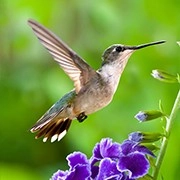The Hidden Hues of Leaves

Leaves are more than just green decorations on trees—they're powerhouses of nature, turning sunlight into life through photosynthesis. But why are some leaves red, yellow, or even purple?
The answer lies in a hidden world of pigments, seasonal changes, and evolutionary adaptations. Let’s unravel the colorful secrets of leaves!
The Green Foundation
The verdant hue of leaves is attributed to chlorophyll, the pigment indispensable for photosynthesis. This remarkable compound absorbs blue and red light while reflecting green light, hence the color we perceive.
There are two primary types of chlorophyll: chlorophyll-a, with its blue-green tint, and chlorophyll-b, exhibiting a yellow-green shade. Young leaves display a brighter green due to their elevated chlorophyll levels. Intriguingly, indoor plants often possess darker leaves to maximize light absorption in low-light environments.
Variations in Verdancy
The spectrum of green observed in leaves is not uniform. These variations are influenced by several factors: the chlorophyll ratio, where a higher concentration of chlorophyll-a results in a bluer green; light exposure, with sun-drenched leaves appearing lighter; and plant health, with stressed leaves turning pale or yellow. Some tree species, such as eucalyptus, naturally exhibit blue-gray leaves, adding to the diversity of the plant world.
The Hidden Pigment Symphony
Beyond chlorophyll, leaves harbor a symphony of other pigments, each playing a crucial role in plant life. Carotenoids, responsible for yellow and orange hues (like the beta-carotene in carrots), contribute to photosynthesis and protect against light damage. Anthocyanins, producing red and purple colors, are often synthesized during cold weather, acting as a natural antifreeze. Flavonoids, responsible for blue and purple shades, offer protection against harmful UV rays. These pigments also aid in attracting pollinators and defending against pests.
Autumn's Chromatic Display
The breathtaking spectacle of fall foliage is a testament to nature's artistry, a chemical masterpiece unfolding before our eyes. As shorter days and cooler temperatures arrive, chlorophyll production slows, revealing the underlying carotenoids, which always reside within the leaves.
The newly synthesized anthocyanins create the fiery reds that paint the landscape. To experience this spectacle, consider visiting New England or Japan’s maple forests during the fall season.
The Non-Green Wonders
Some plants defy conventional expectations, flaunting unnatural hues year-round. Japanese maples boast deep red leaves, adding a touch of drama to gardens. Coleus displays vibrant pink and purple foliage, creating a kaleidoscope of color. Succulents exhibit blue-gray or pink leaves, adaptations for surviving in harsh, sun-drenched environments. These colors serve as survival mechanisms, enabling plants to thrive in extreme conditions.
Decoding Leaf Colors
Leaf color serves as a valuable indicator of a plant’s health and environment. Yellowing leaves often signal a nutrient deficiency, typically nitrogen. Brown edges indicate overwatering or drought stress. Red spots may signify fungal infections or pest infestations. Gardeners utilize these visual cues to diagnose plant problems and provide appropriate care.
A Living Tapestry
From the lush greens of summer to the fiery reds of autumn, leaves are nature's living canvases, each telling a unique story. Their colors narrate tales of survival, adaptation, and the ever-changing seasonal rhythms of the natural world.

Next time you encounter a colorful leaf, remember that it's more than just a pretty sight; it's a testament to science in action, a vibrant expression of life's intricate processes.

 · Information Team
· Information Team